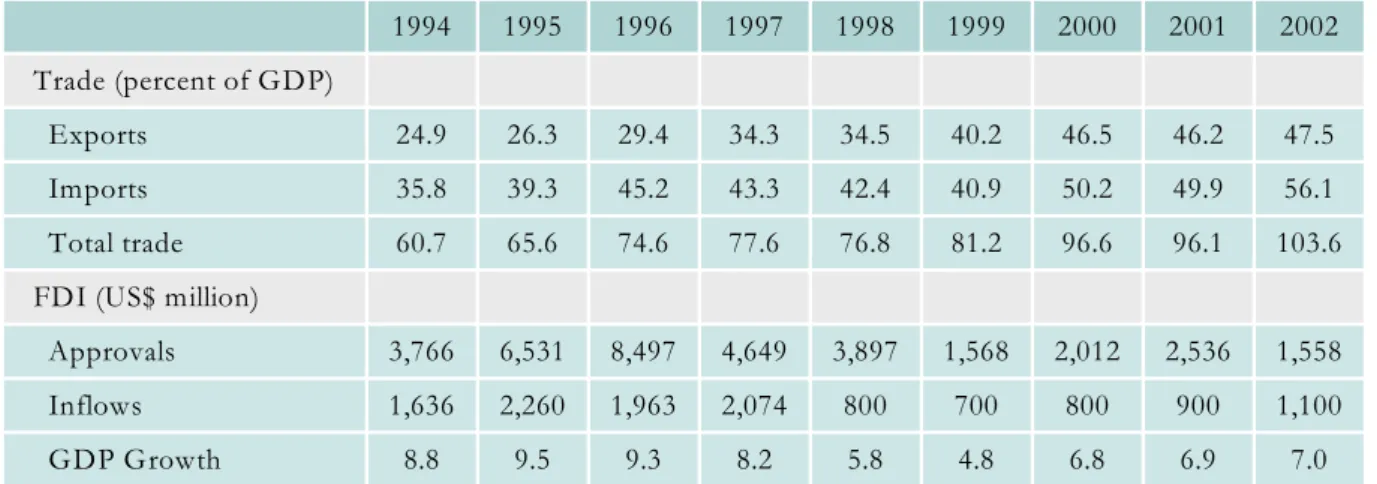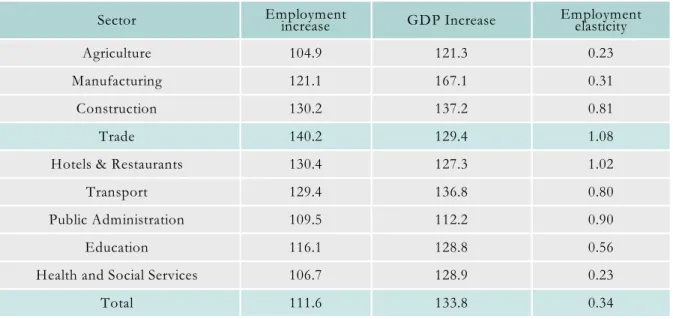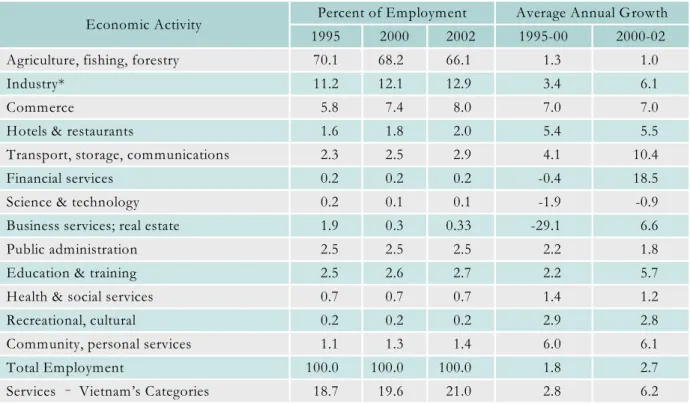Pham Minh Hac, experts and scholars from the Vietnam Academy of Social Sciences, discussants and presenters. Pham Thanh Nghi, experts and scholars, and presenters from the Vietnam Academy of Social Sciences, whose joint efforts made this conference possible.
Concept and Contents of “Doi moi” Policy and Process of Vietnamese Reform
The term “Doi moi”
This was the second historical turning point of the Vietnamese revolution in the 20th century, which began a period of building a united nation in peace. It was thought that there would have been more opportunities and the people's lives would have improved, but on the contrary, the country fell into a serious socio-economic crisis, which led to the third historical turning point (CPV with the emergence of of “Doi moi” policy.
1 ) The crisis situation
On April 30, 1975, the government of the Republic of Vietnam completely collapsed and Vietnam regained its freedom, independence and unification.
2) Causes of crisis
In short, the main content of the "Doi moi" policy in Vietnam is the construction of a "multi-sector commodity economy governed by market mechanisms with state regulation" (CPV, 1991:21). Accelerating the "Doi moi" process, creating motivation to release and support all driving forces;.
1 ) G eneral directions
Reforming Reforming Reforming Reforming Reforming Reforming Reforming Reforming Reforming Reforming Reforming Reforming Reforming Reforming Reforming Reforming Reforming Reforming Reforming Reforming Reforming Reforming Reforming Reforming Reforming Reforming Reforming Reforming Reforming Reforming Reforming Reforming Reforming Process Process Process Process Process Process Process Process Process Process Process Process Process Process Process Process process process process 5. Economic development must be closely related to social progress and justice in every development step.
2) Main contents of economic reform at each periods
Overcome Overcome Overcome Overcome Overcome Overcome Overcome Overcome Overcome Overcome Overcome Overcome Overcome Overcome Overcome Overcome Overcome Overcome Overcome Overcome Overcome Overcome Overcome Overcome Overcome Overcome Overcome Overcome challenges, challenges, challenges, challenges, challenges, challenges, challenges, challenges, challenges, challenges, challenges, challenges, challenges, continue continue continue continue continue continue continue continue continue continue continue continue continue continue continue continue continue continue continue continue the the the the the the the the the the the the the the the the the the the the the the the the Doi Doi Doi Doi Doi Doi Doi Doi Doi Doi Doi Doi Doi Doi Doi Doi Doi Doi Doi Doi Doi Doi Doi Doi Doi Doi Doi Doi moi moi moi moi moi moi moi moi moi moi moi moi moi moi moi moi moi moi moi moi moi moi moi moi moi moi moi moi moi moi moi moi moi moi moi moi moi moi moi moi moi moi moi moi 7. To overcome challenges, continue the Doi moi process. References References References References References References References References References References References References References References References References References References References References References References References.

D iscussion
It has a very poor management of the district, mainly because there are not enough laws; our political system still has many problems. In economic law, experts have found that there are contradictions between socialism and the market economy.
Agricultural Reform in Vietnam
Contents and Drive Method
The failure of collective model to attain food self-sufficiency
The poor performance of agricultural production led to economic targets in the second five-year plan by the IVth National Party Congress not being achieved. In 1980, food imports reached the highest level in history, approximately 1.6 million tons.
The experiment in Hai Phong province
In this period, agricultural production changed from a household economy to a broad commodity and export-driven economy (increased raw exports, developed farm economy and striving to be prosperous). The VIIth Communist Part Congress in June 1991 explained: "The most important task was to develop agro-forestry, fisheries closely related to the processing industry and a comprehensive development of the rural economy and new rural areas are a major target to stabilize socio-economic conditions." .
The State withdraws from business activities: A case study of rice
In the ten years from 1989 to 1999, the growth of agricultural production was 4.3%/year; the growth of fishery production was 5%/year. The productivity of many species of trees and animals increased, with rice yields increasing by 33%, coffee yields increasing by 6-7 times, rubber yields doubling, and pigs increasing by 27%.
V ietnam economy’s growth and important events
There had been massive flooding in the Cuu Long river system since early July; this was the worst flood in a heavily populated area in the past seventy years. High birth rates in agricultural areas may have been attributed to the growth of the working population.
Reform of the Distribution and Commercial Sector in V ietnam
Process and Challenges
Structural structural structural structural structural structural structural structural structural structural structural structural structural structural structural structural structural structural structural structural structural structural structural structural structural structural structural structural structural structural structural structural structural structural structural structural structural structural structural structural structural structural structural structural structural structural structural structural structural structural structural structural structural structural structural structural structural structural structural structural structural structural structural structural structural structural structural structural structural structural structural structural structural structural structural structural structural structural structural structural structural structural structural structural structural structural structural structural structural structural structural structural structural structural structural structural structural reform Reforms Reforms Reforms Reforms Reforms Reforms Reforms Reforms Reforms Reforms Reforms Reforms Reforms Reforms Reforms Reforms Reforms and and and and and and and and and and and and and and and and and and and and and and and and Distribution Distribution Distribution Distribution Distribution Distribution Distribution Distribution Distribution Distribution Distribution Distribution Distribution Distribution Distribution Distribution Distribution Distribution Distribution Distribution Distribution Distribution Services Services Services Services Services Services Services Services Services Services Services Services Services Services Services Services Services Services Services Services Services Services Services Services Services 3. Economic Economic Economic Economic Economic Economic Economic Economic Economic Economic Economic Economic Economic Economic Economic Economic Economic Economic Economic Economic Economic Economic Economic Economic Economic Economic Economic Economic Economic Economic Economic Economic Economic Economic Economic Economic Economic Economic Economic Economic Economic Economic Economic Economic Economic Economic Economic Economic Economic Economic Economic Economic Economic Economic Economic Economic Economic Economic Economic Economic Economic Economic Economic Economic Economic Economic , Integration, Integration, Integration, Integration, Integration, Integration, Integration, Integration, Integration, Integration, Integration, Integration, Integration, FDI FDI FDI FDI FDI FDI FDI FDI FDI FDI FDI FDI FDI FDI FDI FDI FDI FDI FDI FDI FDI FDI FDI FDI FDI FDI FDI and and and and and and and and and and and and and and and and and and and and and and and Distribution Distribution Distribution Distribution Distribution Distribution Distribution Distribution Distribution Distribution Distribution Distribution Distribution Distribution Distribution Distribution Distribution Distribution Distribution Distribution Distribution Distribution Distribution Distribution Services Services Services Services Services Services Services Services Services Services Services Services Services Services Services Services Services Services Services Services Services Services Services Services Services Services Services Services Services 5.

Social Change in Vietnam after Doi Moi
The first priority of social policy is to create a social security system for people, especially the poor; Education Education Education Education Education Education Education Education Education Education Education Education Education Education Education Education Education Education Education Education Education Education Education Education Education Education Education Education 2.
1 ) Introduction
2) Major educational policies
Education Education Education Education Education Education Education Education Education Education Education Education Education Education Education Education Education Education Education Education Education Education Education Education Education Education Education Education Education Education Education Education Education Education Education Education Education Education Education Education Education Education Education Education Education Education Education Education Education Education Education Education Education Education Education Education Education Education Education Education Education Education Education Education Education Education Education Education Education Education Education Education Education Education Education Education Education Education Education Education Education Education Education Education Education
3) Current situation of education
Health Health Health Health Health Health Health Health Health Health Health Health Health Health Health Health Health Health Health Health Health Health Health Health Health Health Health Health Care Health Care Care Care Care Care Care 3. In the past health care was fully subsidized by the Government, while in the new system, the government, community, family and individuals share the costs of health care.
2) Major policies and programs
Employment Employment Employment Employment Employment Employment Employment Employment Employment Employment Employment Employment Employment Employment Employment Employment Employment Employment Employment Employment Employment Employment Employment 4.
2) Employment policy and programs
Poverty Poverty Poverty Poverty Poverty Poverty Poverty Poverty Poverty Poverty Poverty Poverty Poverty Poverty Poverty Poverty Poverty Poverty Poverty Poverty Poverty Poverty Poverty Poverty Poverty Poverty Poverty Poverty Poverty Poverty Poverty Poverty Poverty Poverty Poverty Poverty Poverty Poverty the Poverty Poverty Poverty Poverty Poverty Poverty Poverty Poverty reduction reduction 5. Vietnam has made remarkable achievements in lifting a large number of poor people out of poverty.
2) A chievements and challenges
Poverty reduction has been at the top of the national development agenda since the day of independence. Poverty is concentrated in rural areas and areas with unfavorable livelihood conditions, such as mountainous, remote and isolated areas, so that most of the income of the poor comes from agricultural work.
3) Challenges
Specialized poverty alleviation workers have been made available to 1,798 municipalities from 22 provinces and cities (SRV, 2003). The staff equipped with basic knowledge are qualified to instruct people to implement poverty alleviation programs.
2) Policy and programs
3) Compensation for accidents when working
The insurance organization will pay once if the employee has lost 5 to 30 percent of work capacity; they will be paid monthly if they have lost 31 percent or more of their work capacity. A person who has lost 81 percent and more work capacity will get 80 percent of the minimum salary monthly.
4) A llowances for losing jobs
If the employer has purchased accident insurance, the insurance agency pays instead of the employer. 2) The insurance organization pays for people who have paid accident insurance when they have lost more than 5 percent of their ability to work. Reference Reference Reference Reference Reference Reference Reference Reference Reference Reference Reference Reference Reference Reference Reference Reference Reference Reference Reference Reference Reference Reference.
Understanding North K orea’s Economic Reforms
Overview Overview Overview Overview Overview Overview Overview Overview Overview Overview Overview Overview Overview Overview Overview Overview Overview Overview Overview Overview Overview Overview Overview Overview Overview Overview Overview
1 . Economic Management
- New and Revised Laws and O rganizations: New Economic O rdinances, the Reinforced A uthority of the Cabinet, and the Change of G enerations
- Macro-Economy
- Public Finances: Rationalizing the Financial Structure
- Public Finance and Foreign Exchange: Raising the Exchange Rate to a Realistic Level and Preparing for Financial Reforms and O pening of the Economy
- Reforms by Sector
- Enterprises
- Commerce
- Foreign Economic Relations
- Foreign Trade: Reorganization of the Trade Management System including Trade D ecentralization and O rganizational Restructuring
- A ttracting Foreign Investment: Reforms, Reorganization, and Preferential Treatment to Companies of O verseas K oreans
- Accomplishments and Challenges
In the "Commerce Act" measures for the activation of the market, including commercial transactions, are stipulated. Regarding the administration of the market, North Korea is restructuring the existing farmers.

1 . A ccomplishments
Improving Productivity in A griculture and Light Industries, Revitalizing Commerce
- Problems
Regarding this phenomenon, Joseon Sinbo reported in December 2003: "In most footwear factories, including those in Sineuiju and Gangseo, 9 million extra pairs of shoes were produced through July compared to the same period last year." In the evaluation of North Korea's economic reform, there have been some positive aspects of economic reforms.

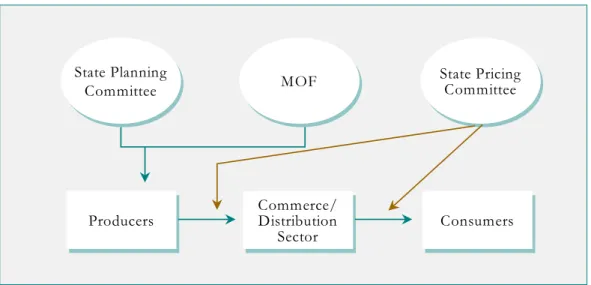

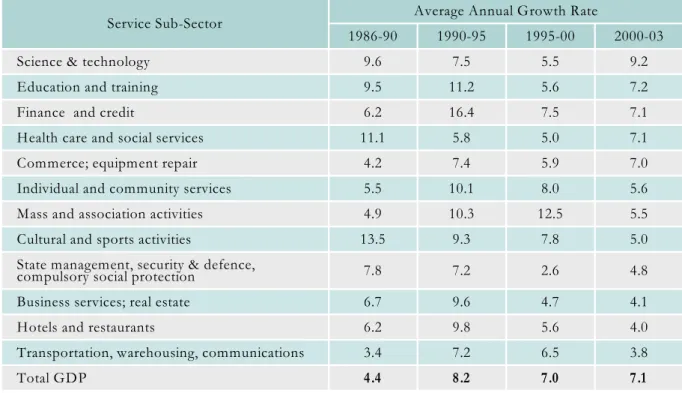
![Table 4: Percent of Vietnam’s GDP by economic activity: 1995-2003 [constant price]](https://thumb-ap.123doks.com/thumbv2/123dokinfo/10592527.0/54.892.104.792.315.771/table-percent-vietnam-gdp-economic-activity-constant-price.webp)
